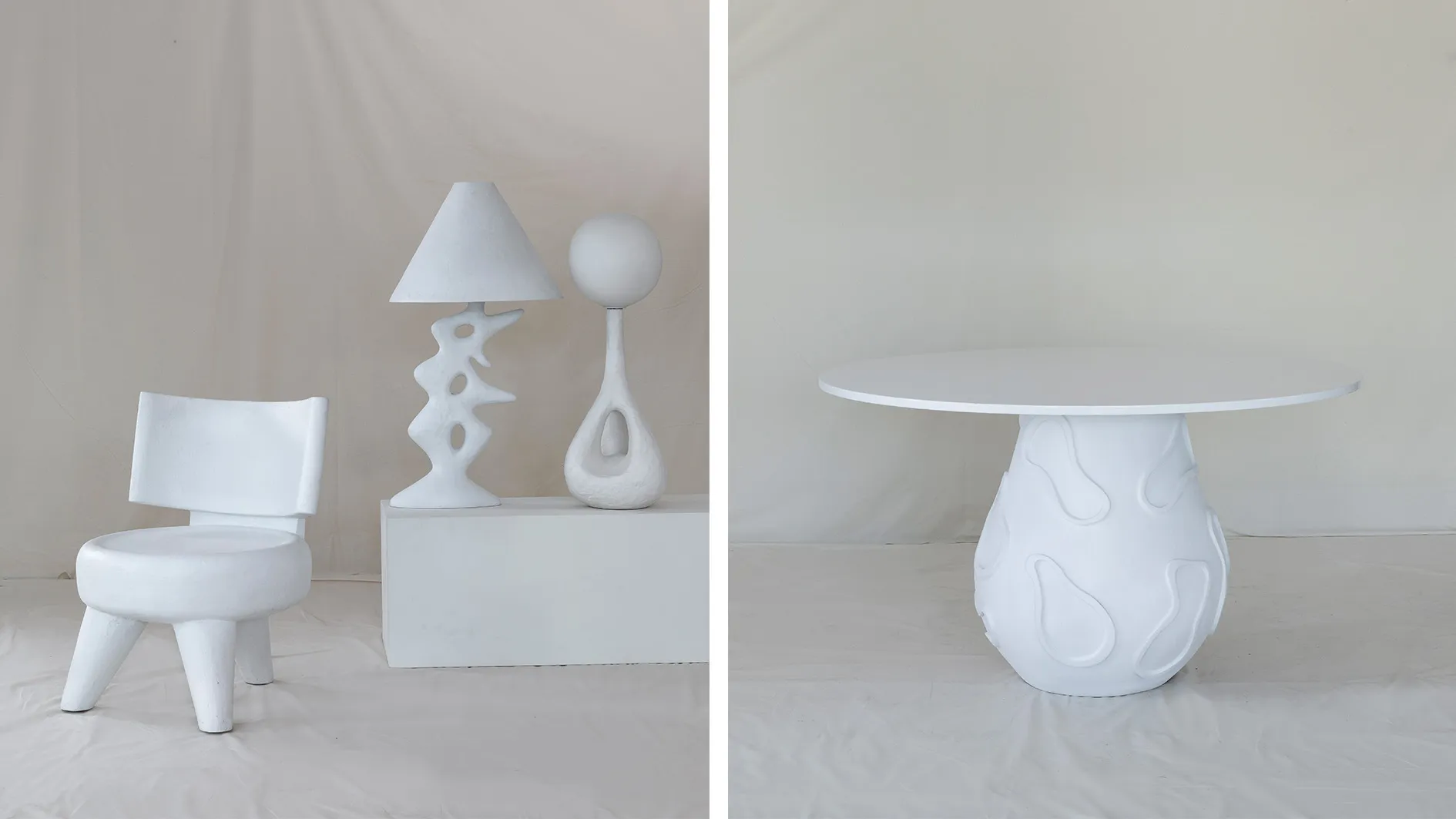Ralph Pucci’s Provence Exhibition is Where Minimalism Speaks Its Quiet Rebellion


Set against the sun-drenched limestone backdrop of Provence, Ralph Pucci's aptly named 'Pure' exhibition feels less like a design showcase and more like a manifesto written in negative space. In rooms where absence speaks as loudly as presence, Pucci has orchestrated what might be the most subversive design statement of our era: nothing extra.
This is minimalism, not as a trend but as resistance.
Maximalism has colonized our screens, homes, and attention. The average American is exposed to between 4,000 and 10,000 advertisements daily and digital environments are designed to trap rather than liberate. Pucci's curation can be seen as a form of cultural dissent. Each spare object in 'Pure' seems to whisper: What if we stopped adding and started subtracting?
What Ralph Pucci’s PURE Exhibition in Provence Reveals About Design, Craft, and Cultural Memory
Set within Oscar Niemeyer's Pavilion at Château La Coste, PURE is Ralph Pucci’s first major international exhibition, celebrating his 50-year legacy as a design visionary. The show presents over 50 sculptural works—tables, lighting, and seating—made from Plasterglass, a unique material developed in-house that preserves the hand-marked texture of each form. The exhibition is accompanied by live sculpting demonstrations, reinforcing Pucci’s commitment to honouring the process of creation as much as its outcome.
Rather than relying on visual spectacle or decorative flourish, PURE emphasizes restraint, form, and tactile memory. The space is scored with 1950s jazz—Miles Davis, Bill Evans, and Chet Baker—evoking both temporal context and emotional resonance. The result is a meditative experience that asks visitors to engage not just with objects, but with the material honesty and emotional quietude they represent.
Positioned in the warm light and open-air serenity of Provence, PURE dissolves the sterility often associated with minimalist design, reframing it as a form of creative clarity, cultural resistance, and sensory recalibration. The absence of wall texts or instructions renders the viewer’s intuition the sole interpretive tool.
By rejecting overexplanation and excess, Pucci stages a compelling argument: in a time defined by digital overstimulation, the future of design may belong to those who can create space, not just fill it.


The Emotional Exhaustion Driving Our Collective Return to Simplicity
The timing of 'Pure' isn't accidental. We're witnessing a broader cultural fatigue with the sensory bombardment of the 2020s—a decade where design has become increasingly performative rather than purposeful. And this is not slowing down in the age of AI and the rapid development of digital content. The exhibition arrives precisely when many of us find ourselves overwhelmed by visual complexity, from algorithmic feeds designed for endless scrolling to homes filled with objects acquired more for their Instagrammability than their practical utility.
There's something revolutionary about restraint right now. We've conflated visual richness with value for too long.
How Provence Transforms From Background Setting to Active Participant
While minimalism has historically been exhibited in white cube galleries or urban warehouses, Pucci's decision to stage 'Pure' in Provence completely transforms the concept. Here, in a landscape renowned for its light, which has captivated artists from Cézanne to Matisse, minimalism doesn't read as cold or industrial—the traditional Western critique—but instead absorbs the warmth of its surroundings.
Morning light moving across a simple plaster wall becomes as intentional as any displayed object. The region's famous mistral wind, passing through open windows and gently disturbing curtains, becomes performance art. Provence's natural minimalism—its ancient simplicity of earth, light, and stone—reframes the entire conversation about what \"enough\" might mean.
Between Digital Excess and Material Restraint Lies Our Next Cultural Movement
The exhibition offers no explanatory panels to clarify why certain pieces were included. Instead, viewers encounter carefully considered objects that each tell their own story through material integrity—handmade ceramics with visible fingerprints, wooden furniture where grain patterns become the decoration, textiles that celebrate their raw fibres rather than elaborate designs.
This material honesty stands in stark contrast to our increasingly artificial world, where digital filters homogenize expression and AI-generated content threatens to flood our already overwhelming visual landscape with more images than humans could view in multiple lifetimes.
'Pure suggests something radical: perhaps our next cultural renaissance won't be built on new technologies or more sophisticated design, but on a collective remembering of what it feels like to experience beauty directly, without mediation or excess.
The Future of Minimalism Belongs to Those Seeking Freedom From Visual Noise
As younger generations increasingly report anxiety stemming from digital overload, Pucci's exhibition feels less like a backward glance at 1960s minimalism and more like a portal to a possible future—one where design serves emotional wellbeing rather than consumption.
What makes Pure particularly significant is how it avoids the historical elitism associated with minimalism. These aren't perfect, untouchable spaces. The exhibition celebrates minor imperfections, the traces of human hands, and the natural patina that comes with actual use. This is minimalism not as a precious artifact but as a practical solution.
As this exhibition sets out to make its mark, one must ask: are we witnessing another swing of the aesthetic pendulum, or something more profound—a fundamental recalibration of our relationship with the visual world?
Perhaps the most radical act of design in 2025 isn't creating something new, but creating the space to see what already exists truly. Pucci's 'Pure' makes a compelling case for less—and in that absence, we might finally find what we've been looking for all along.
